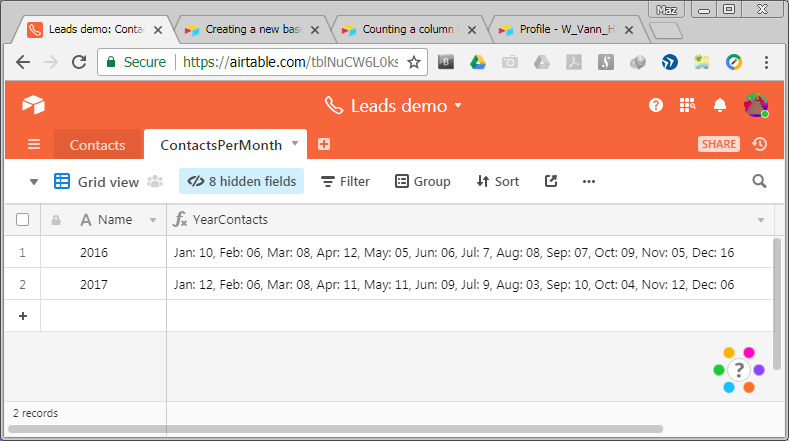Hi all – new to Airtable, but over the last 3 weeks have absolutely loved it and now using it for everything. It’s awesome.
I need help with something that I’m not sure can be done yet.
I have a CRM, with a table that is a funnel, each record being a different lead. I have a separate table that is my business dashboard: a summary of my activity.
I want to have on my dashboard the number of leads I’ve contacted per month, based on the creation date of each record in the CRM Funnel.
Is there a way to count all the records in a table, determine what their creation date is, and then get that single number and put it in a cell?
Thanks in advance,
Scott






